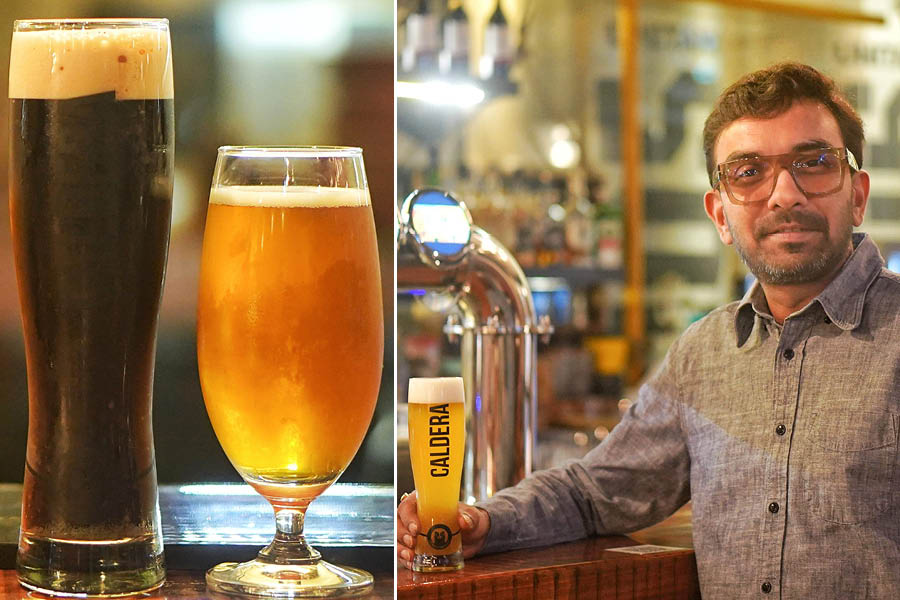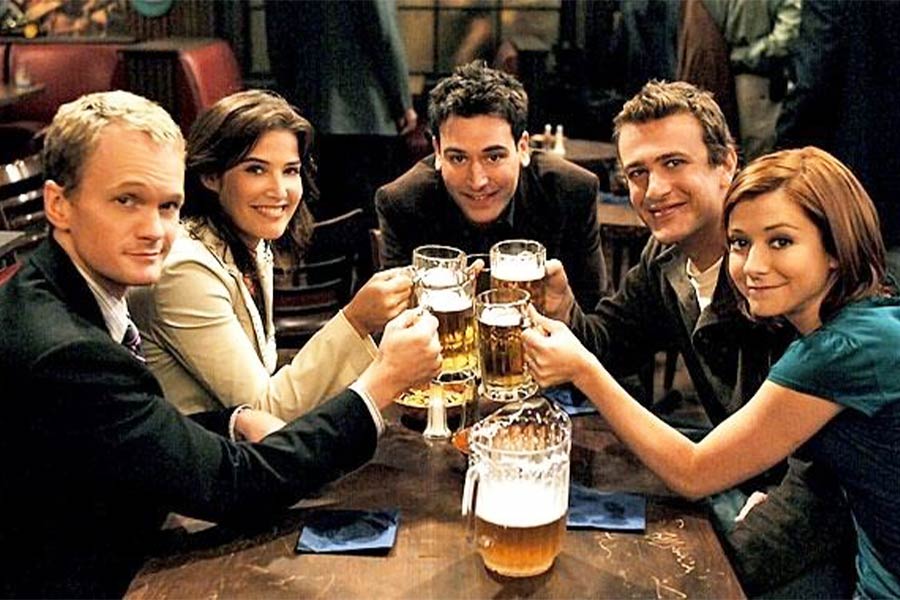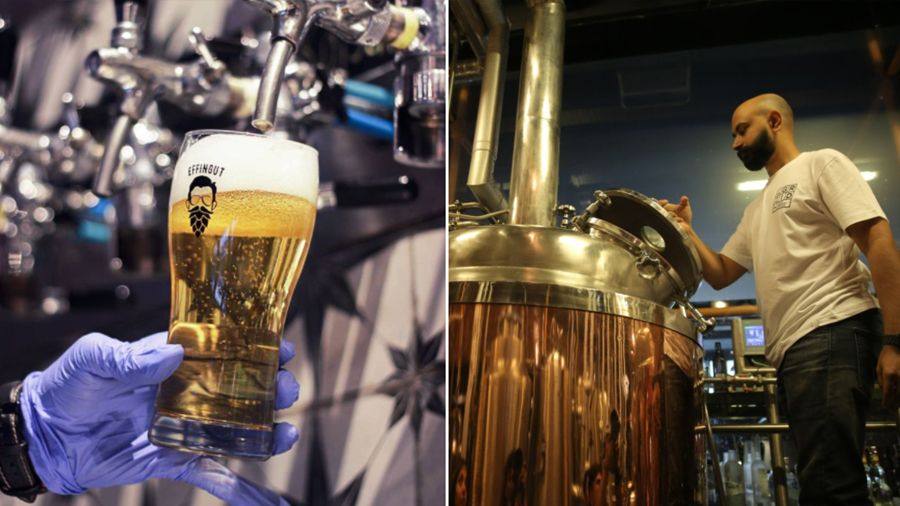While Bengaluru may be India’s craft beer capital, Kolkata is quickly emerging as a hotspot for beer lovers, thanks to pioneers like The Grid, who are redefining the city’s craft beer scene. My Kolkata visited the microbrewery in Topsia to get an insider’s look at how these local brews are made. With Caldera now flowing from taps at around 100 outlets and their bottles stocked in major FL shops, the brand is making a significant splash in Kolkata’s beer market.
To delve deeper into the driving force behind Kolkata’s craft beer movement, we sat down with Gaurav Karnani, the 44-year-old visionary behind Caldera’s rise.
My Kolkata: Can you take us back to the start of Caldera and talk us through how everything was set up?
Gaurav Karnani: Caldera was born at The Grid in 2016. In 2022, we expanded outside The Grid by setting up our microbrewery, which took us four years to build. At The Grid, we brew 5,000 litres a month, but from the microbrewery we produce that amount daily. This 30x increase in capacity from our brewpub allowed us to sell our beer beyond our own establishment. Initially, we supplied to three or four outlets, but now we’re available in over 100 outlets with more than 100 taps installed.

The Tombolo is stout beer while Eskar is apple cider beer, both fresh off the tap, crisp and chilled at The Grid, Kolkata. There are also festive and seasonal beers like Marzen and American Mango Wheat (not in picture)
Is that just in Kolkata or beyond?
This is not just Kolkata, we are also present in Durgapur, Asansol and Siliguri, though logistics can be a challenge. But, yeah, we are still trying to make our presence there. Our focus is on expanding across Bengal, and in the next six months, we aim to have Caldera available throughout the state.
Do you see a shift in people’s approach to craft beer? In India, it is comparatively still a new market.
What is happening is that people are moving away from the conventional way of drinking beer – like bottled or lager beer – and are understanding why craft, fresh or draught beer is often preferred. The craft beer trend and culture is just starting to pick up in India, and as a global trend, we still have to match the pace. For instance, in India, the spirit (30ml pegs) to beer consumption is 7:1, while globally it is the opposite — one spirit to seven beers. But yeah, the younger generation is more inclined towards beer, wine, alcohol pops, white spirits, signalling a kind of shift in drinking habits.
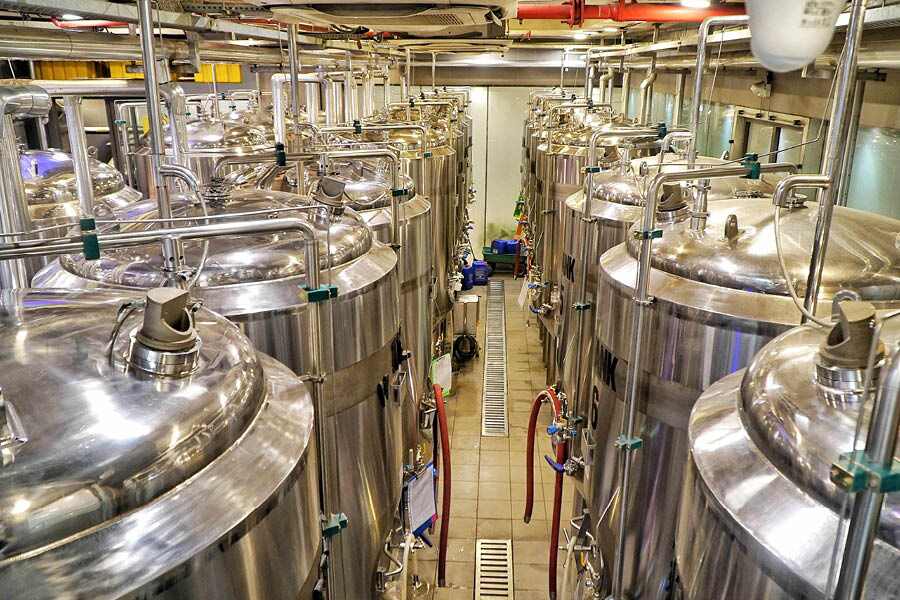
At the microbrewery in Topsia, 2,500-2,700 bottles are filled and readied in an hour
Do you plan on taking Caldera to other states and cities?
Yes, that is actually the intent. The name Caldera is actually stitched in a way that ‘Cal’ comes from Calcutta, and ‘Dera’ is a Hindi word for adda. Our brand tagline is ‘Calcutta's finest craft’. So the name reflects our pride in where the product comes from. Just like how Calcutta is known for its rosogulla, we want it to be known for its beer. We’ve received good response from patrons in cities like Bengaluru and Delhi, and even from those overseas. When they drink Caldera, their first reaction is that it could stand toe-to-toe with some of the best beers in the world.
Why does the Caldera taste different from the tap and the bottle?
That’s because they are two different beers. What we supply in kegs to outlets that have taps is a German wheat, specifically a Hefeweizen, while our bottled beer is a Belgian wheat variant. We did find it a challenge to explain the difference in taste when the bottles were launched. It’s like kali and pili dal (black and yellow lentil), they’re both dals but they don’t taste the same. Belgian wheat beer, like Bira or Hoegaarden, is less complex and easier to shelf, whereas German wheat beer is temperature-sensitive and better suited to cold climes.
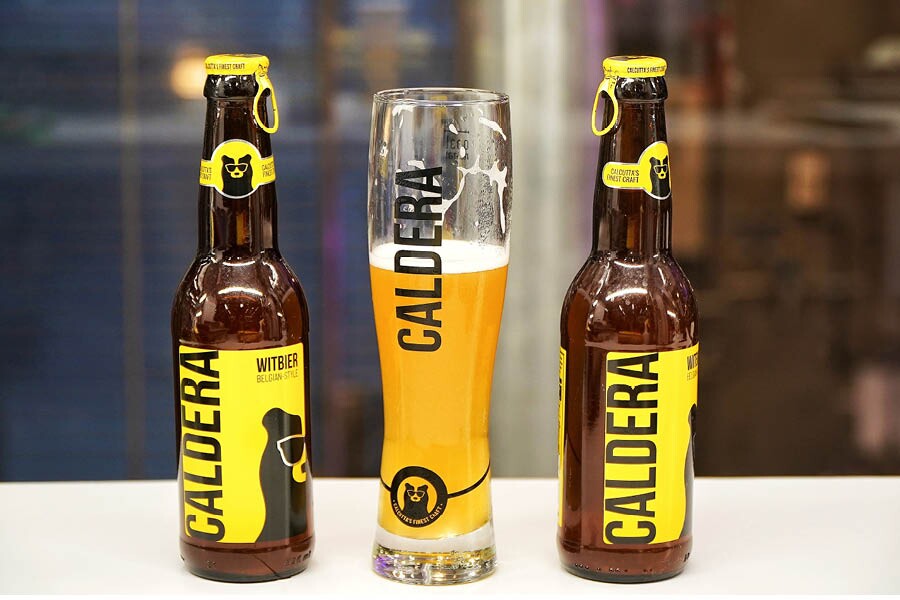
Those who have tasted the bottle and tap variations of Caldera and wonder why the taste differs, it’s because the tap beer is German wheat while the bottled version is Belgian wheat
What would you like first-time Caldera drinkers to feel?
One word I would want them to feel is ‘wow’. Caldera’s real experience comes with the aftertaste. When you gulp a commercial beer, there is no aftertaste; what you feel is only alcohol, but with craft beer, the aftertaste lingers for hours. That’s what got me hooked to craft beer 11 years ago in Bengaluru, when I dropped by Koramangala Toit on the way to the airport and tried their Tint in Wit. After landing in Kolkata, I could still feel the taste of that beer, so the next day I contacted Toit, met their brewer and that is how the journey of craft beer started for me.
What does the bear on your logo symbolise?
We wanted to give a mascot to the overall brand language. And we came up with the bear because it represents strength and a fun loving character that syncs with the young and vibrant concept of Caldera. We named him Cal as a nod to ‘Calcutta’. So, Cal’s Dera or Calcutta’s adda. That apart, the tiger or lion is on Simba Beer’s logo, and Bira has a monkey.
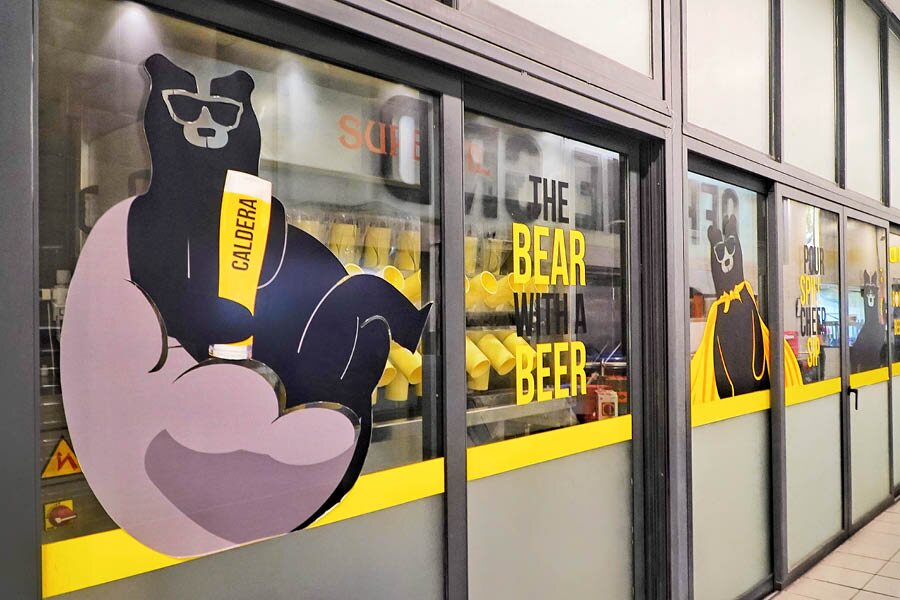
Cal, the bear mascot, symbolises strength and fun, embodying the youthful spirit of Caldera
What’s next for Caldera? Are there new variants in the pipeline?
We are working on a Pilsner for the past year and hope to launch it in bottles by New Year. Lagers, like Pilsner, are preferred because it’s a less complex beer and more stable in India’s hot, humid and tropical environment. Bottles are also easier to sell and move in larger volumes than kegs, which come with logistical challenges. We are even in talks with other craft brewers in Bengaluru, Goa and Gurgaon about collaborating on new brews.
How would that collaboration work?
We would brew each other’s beers. For example, our team will go to Bengaluru to brew Caldera and Bengaluru’s brewing team will visit and use our facility in Kolkata. So one would not be able to say that to drink Bengaluru craft beer, I have to go to Bengaluru. The beauty of the craft beer industry is that nothing is hush-hush and everyone is open to discussions about what and how they are brewing.
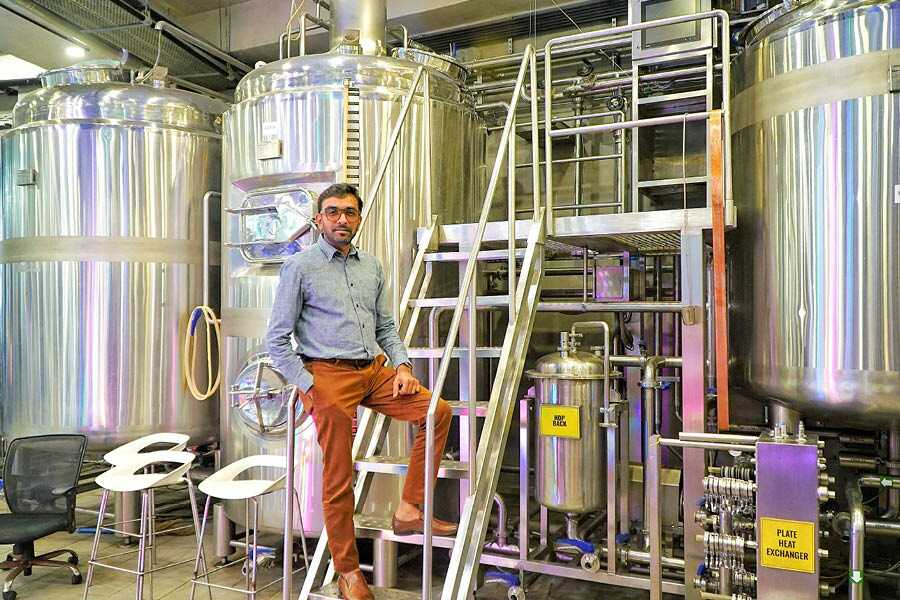
‘We aim to collaborate with breweries from across the country to bring their beers to Kolkata while also taking Caldera to other states,’ says Gaurav Karnani
What’s happening at The Grid in terms of experimentation?
We have experimented with spices in our beer. We have brewed about 60 variants out of which 10-12 have worked out well. Of these, four have become such that we simply can’t take them off the menu. Our top three beers, in order of popularity, are Caldera, Stoutware, and our Cider. The cider stands out because we source fresh apple pulp straight from Himachal Pradesh.
----------
My Kolkata also spoke to Rahul Debnath, the head brewer at Caldera. The 38-year-old, who previously worked with Carlsberg, joined Caldera a year ago and happily shared insights into the brewing process. Excerpts from the chat follow.
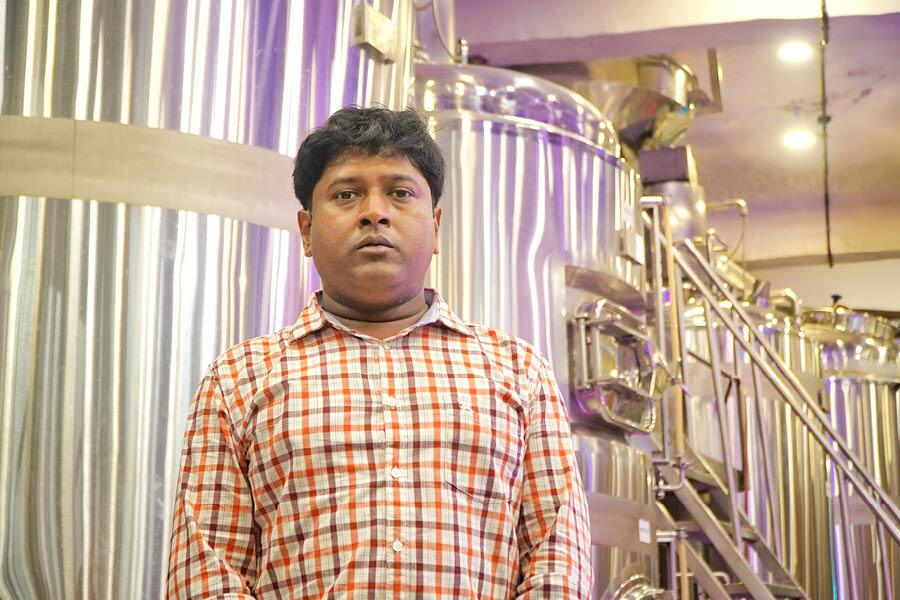
Rahul Debnath, the head brewer of Caldera
My Kolkata: Can you take us through the step-by-step process of brewing Caldera?
Rahul Debnath: The raw material we use to make our beers is imported. The most popular beer is the Caldera Hefeweizen, which is made from German wheat. The process begins by milling the malt into a powder. The first step, called mashing, converts complex sugars into simple sugars. The sugar is then extracted by a process called lautering, which yields a sugar solution called wort. The wort is sterilised by boiling it at 100°C for an hour, after which it is transferred to the fermenter or Unitank. This is where the yeast is added, and fermentation takes place. It takes about 15-17 days to complete the brewing process for a beer.
Is there any difference between brewing a Belgian wheat beer and German wheat beer?
The brewing process isn’t that different. The primary difference is the ingredients, particularly the type of wheat and yeast. The yeast profile plays a key role in defining the beer’s flavour. The Belgian wheat beer, which is bottled, takes 21 days to brew, while the German Hefeweizen takes 15-17 days.
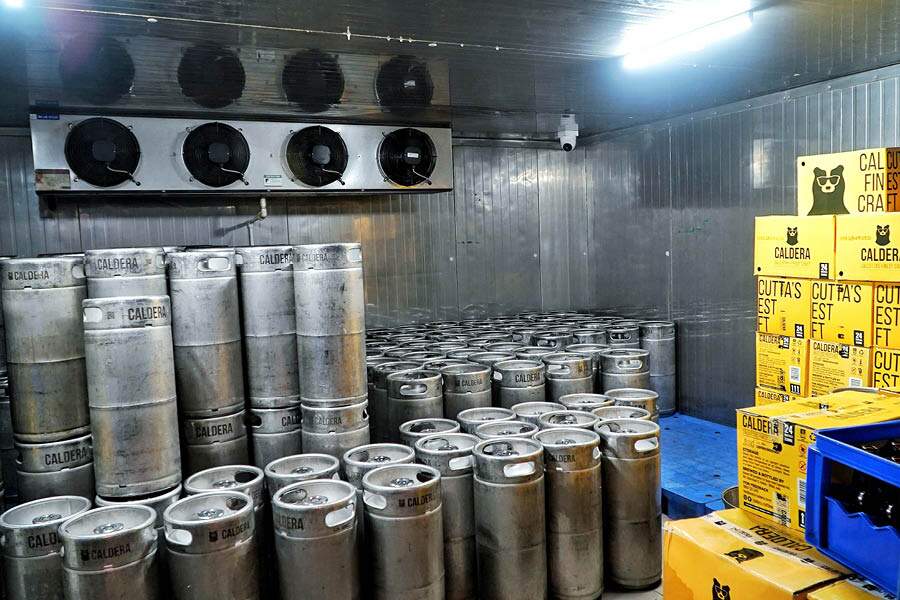
20 litre kegs and cartons of Caldera bottles in the cold storage, ready to be shipped across the city. Calcutta Swimming Club, The Park, Le Coffee Creme, Lord of the Drinks and Golden Park are the top sellers of Caldera, while the 330ml bottles do well at Spencer’s outlets
How do you maintain consistency in flavour and taste with every batch brewed?
Maintaining consistency with the flavour of the beer is an important part of brewing. We haven’t changed the recipes, malts or ingredients of Caldera since we started. What we ensure is that we never rush the beer, we give a batch the time it needs to brew instead of trying to speed up the production at the cost of quality.
